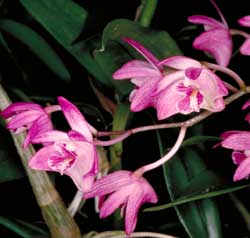This weekend felt like it might have been the first of the summer-like days – mild temperatures, light breezes and no rain for the first time in ages. I spent most of it in the garden, doing a wide variety of chores. Primary among those was working among my Pacific Coast Iris seedlings, recording the blooms as they opened, selecting those that will live to see another day and removing those destined for the compost heap, and making new crosses. Each year I plant about 300 seedlings and about ten will make it through to flower the second time, so it is a slightly upsetting process, but one that most be carried out – we already have far too many irises around here and if I did not cull out rigorously we would have tens of thousands.
I did manage to get a bit of time in the vegetable garden too, getting my tomatoes in the ground. I know many of you will have put yours in last weekend, but I like to let the ground warm up a little more before I plant mine out. I bought some advanced grade F1 hybrids a week or two back and grew them on in the glasshouse to make them even bigger – it is the early crop that makes the difference when growing tomatoes at home.
I had prepared the soil well by digging in some extra compost and also boosting the soil with fertiliser. I placed the stakes in the ground before planting, and then dug some holes a little bigger than the bags the plants were growing in. This allowed me to plant each tomato slightly deeper than it had been in the bag – the theory is that tomatoes planted slightly too deep will form roots from the exposed stem. If you chose to do this, remember not to plant deeper that the first leaves.
I also bought some basil plants when I got the tomatoes, but these will stay in the glasshouse for a few weeks yet, as basil needs the soil to be even warmer than tomatoes before it will establish well. I usually grow a few plants of the normal sweet basil, but I prefer the more interesting flavour of the spicy globe variety. This has smaller leaves – it makes a neat little bush and could be used as an edging if you were looking for one for the vegetable plot over summer. If you prefer more pungent types you should probably go for Thai basil, which is commonly used in Asian cuisine and has a star anise overtone. There is also a nice lemon scented variety which has a strong citrus fragrance.
All basils prefer moist conditions in as warm a spot as you can provide. If you want to see basil growing very fast and with succulent leaves try popping a few in a tunnel house or in the glasshouse. It grows like a weed, but retains that wonderful pungent flavour. In the garden, a warm spot with lots of water and lots of food will suit them well – I grown them among the tomatoes, where they get a bit of shade at the height of the day. Later in the season they can look a bit tatty, so I just cut them back (use the leaves for a pesto that you can keep) and give some extra fertiliser, and the plants soon bounce away again.
If you are new to gardening and have constructed a box-like structure for growing your vegetables, you can probably plant your basil straight away. These elevated gardens will warm up a lot quicker than garden soil, and will be ready for planting a week or two earlier than most open gardens. You should already have good crops of lettuces and other summer salad greens underway. Don’t forget to try one or two other leaves for your salad greens – young beet leaves are tender and luscious, and mizuna and rocket leaves provide a lovely sharper taste.



